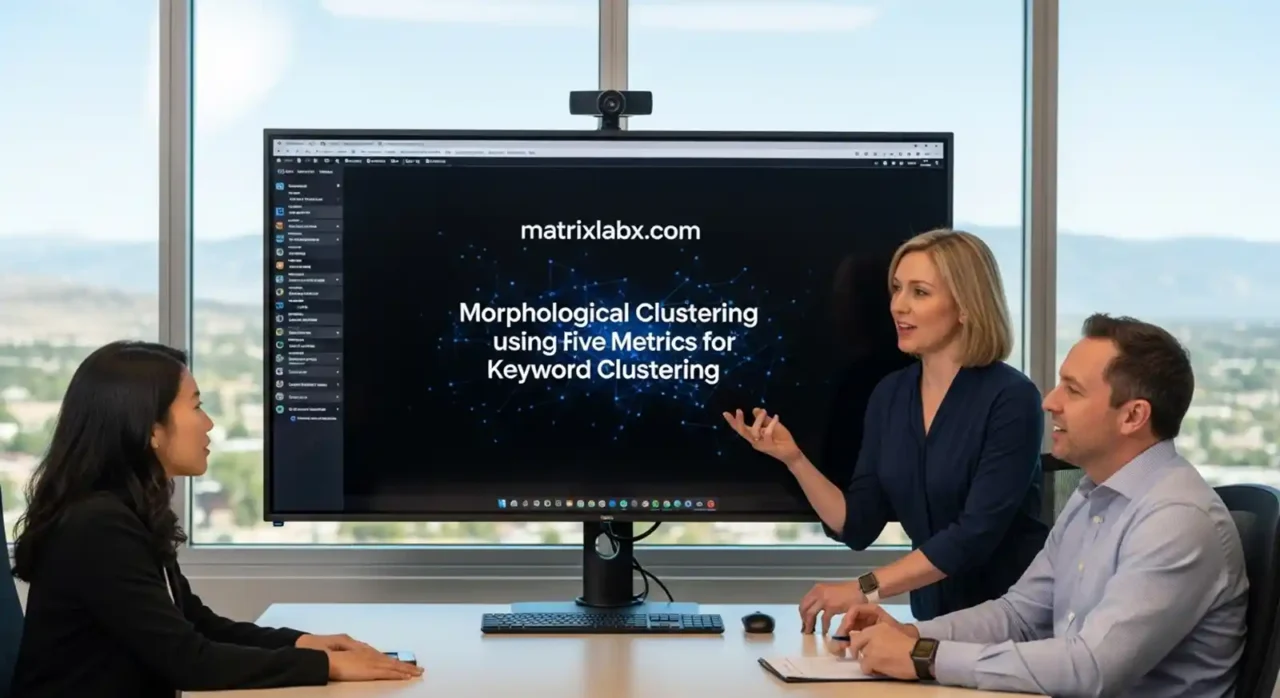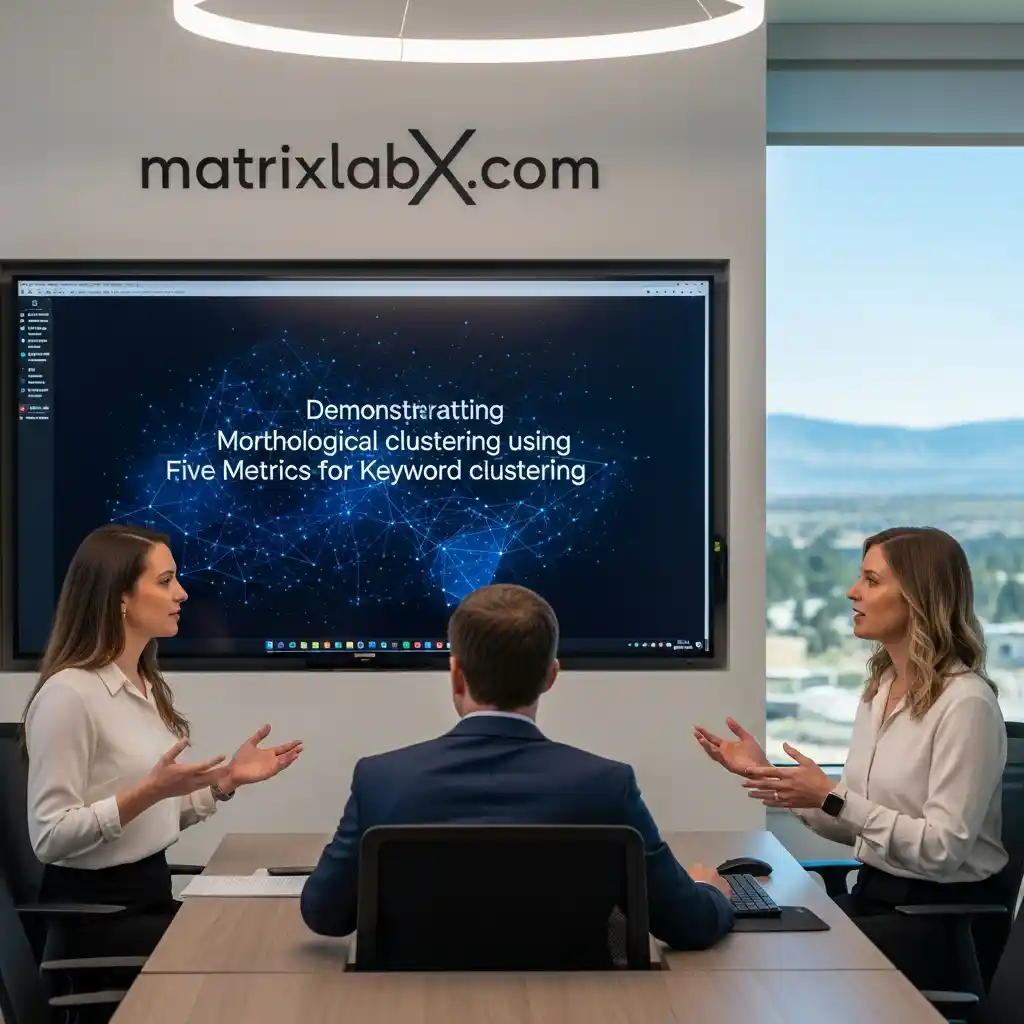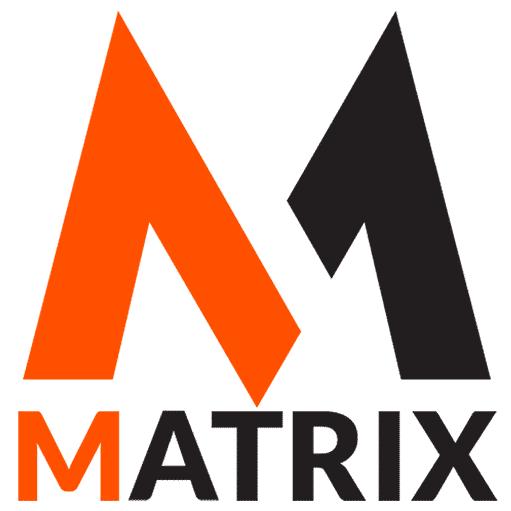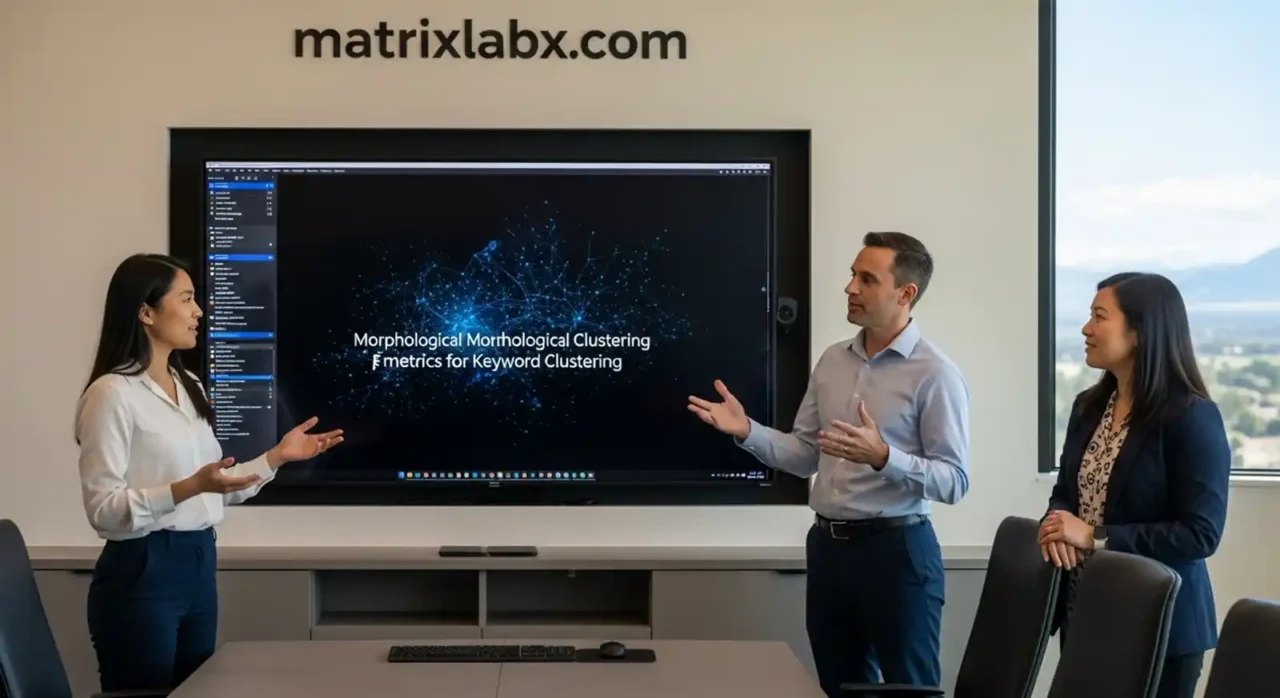Morphological Clustering: From Problem to Solution
Learn About Morphological Clustering: From Problem to Solution to Boost Sales.
In a bustling conference room, David, a seasoned computational linguist, stands before the search engine team, ready to unveil a transformative concept. He draws a circle on the whiteboard and writes “manage” in the center.
“This is your root,” he declares, capturing the team’s attention. With swift strokes, he sketches lines branching out to words like “management,” “manager,” “managing,” and “manageable.”
“Your users are using all these words,” David explains, “but your engine is treating them as separate islands. Morphological clustering is the bridge. It allows the system to understand that all these words belong to the same ‘family’ of meaning.”
For marketing managers seeking to optimize their digital strategies, David’s insights are a revelation. Imagine a search engine that doesn’t just match strings of text but understands the very structure of a user’s intent. Morphological clustering offers this potential.
By grouping related words, it enhances search accuracy and relevance, ensuring users find exactly what they’re looking for, even if their search terms vary.
In today’s competitive landscape, where consumer behavior is dynamic and language is ever-evolving, leveraging morphological clustering can be a game-changer. It empowers marketing teams to connect more deeply with their audience, improve user engagement, and drive conversions.
David’s demonstration is more than a technical exposition; it’s an invitation to revolutionize how we understand and respond to user queries.
SOV Comparison Tool
Analyze your Share of Voice and get actionable recommendations.
As the meeting progresses, the room buzzes with excitement. The possibilities of morphological clustering are vast, promising not only enhanced search capabilities but also a more intuitive and personalized user experience.
For marketing managers, this is the key to unlocking deeper insights and crafting strategies that resonate. Welcome to the future of search—a world where every word is a gateway to understanding.
- A study by Forrester Research found that businesses leveraging advanced semantic search technologies saw a 20% increase in user engagement, as these systems deliver more relevant results by recognizing related terms and concepts.
- IDC reports that the global market for AI-driven search technologies is projected to grow at a compound annual growth rate (CAGR) of 25% through 2026, driven by the demand for more intuitive and accurate search capabilities.
Enhancing Search Engine Relevance with Morphological Clustering

A data science team at a large tech company is working on a new search engine, aiming to improve its ability to handle user queries effectively.
A significant challenge arises when users search using variations of the same root word. For instance, searching for “how to manage a project” yields different, often less relevant, results compared to “project management techniques.”
This discrepancy highlights the need for the search engine to recognize that these terms are semantically related, ensuring it provides comprehensive and accurate results.
Understanding the Importance of Morphological Clustering
In a meeting with the search engine team, David, a computational linguist, introduces the concept of morphological clustering.
Drawing a circle on the whiteboard, he writes “manage” in the center. He then extends lines to related words: “management,” “manager,” “managing,” “manageable.”
David explains, “Your users are using all these words, but your engine is treating them as separate islands. Morphological clustering is the bridge. It allows the system to understand that all these words belong to the same ‘family’ of meaning.
By grouping them, we’re not just matching strings of text; we’re mapping the very structure of the user’s intent.”
Implementing Morphological Clustering for Enhanced Search

The implementation of morphological clustering involves advanced natural language processing (NLP) techniques.
By identifying and grouping words with the same root, the search engine can deliver results that are more aligned with user intent.
This approach not only improves user satisfaction but also increases engagement and retention, critical metrics for any tech company.
The Role of SEO and Content Managers
For SEO and content managers, understanding and leveraging morphological clustering is essential. By creating content that aligns with these semantic structures, they can enhance visibility and relevance in search engine results.
This involves researching variations of keywords and incorporating them naturally into content, ensuring it resonates with how users search for relevant information.
Moreover, SEO professionals can collaborate with data science teams to provide insights into user behavior, helping refine the algorithms that underpin morphological clustering.
This synergy between human expertise and machine learning can significantly elevate the effectiveness of search engines.
Incorporating morphological clustering into search engine development is a strategic move for tech companies aiming to improve user experience.
By recognizing and grouping related terms, search engines can better understand user intent, providing more accurate and relevant results.
For SEO and content managers, this represents an opportunity to optimize content strategies, ensuring alignment with how users interact with search technologies.
Embracing these advancements is not just about staying competitive; it’s about leading the way in a rapidly evolving digital landscape.
Step-by-Step Implementation of Morphological Clustering for Improved Search Engine Results

Understand the Problem:
Identify the variations of root words that cause discrepancies in search results.
Recognize the impact of these discrepancies on search engine performance and user satisfaction.
Research Morphological Clustering:
Study morphological clustering techniques to understand how they group variations of root words.
Examine linguistic patterns and rules that govern word formations and derivations.
Data Collection:
Gather a comprehensive dataset of user queries and search results.
Include various forms and derivatives of common root words relevant to your search engine.
Preprocessing:
Clean the data by removing noise and irrelevant information.
Tokenize queries to break them down into individual words and terms.
Implement Morphological Analysis:
Use stemming and lemmatization to reduce words to their base or root forms.
Apply linguistic algorithms to identify morphological patterns and group related terms.
Clustering Algorithms:
Select appropriate clustering algorithms (e.g., K-means, hierarchical clustering) to group similar terms.
Use semantic similarity measures to ensure accurate clustering.
Integration with Search Engine:
Integrate the clustering model into the search engine’s query processing pipeline.
Modify the search algorithm to consider clustered terms as semantically related.
Testing and Evaluation:
Conduct A/B testing to compare search results before and after implementing morphological clustering.
Analyze metrics such as relevance, accuracy, and user satisfaction to evaluate improvements.
AI SEO Optimization:
Utilize AI SEO tools to ensure the search engine effectively ranks relevant content.
Continuously optimize content generation to align with user search patterns and clustered terms.
Content Generation and Management:
Implement AI-driven content generation tools to create comprehensive content around clustered terms.
Regularly update content to reflect changes in language use and search trends.
Continuous Improvement:
Monitor user feedback and search trends to refine the clustering model.
Update the algorithm as necessary to adapt to evolving language patterns and user needs.
Documentation and Training:
Document the entire process and provide training for team members on morphological clustering techniques.
Ensure knowledge transfer and maintainability of the implemented solution.
By following these steps, the data science team can enhance their search engine’s ability to recognize and process semantically related terms, leading to more accurate and comprehensive search results.
Morphological Clustering: Transforming Search Engine Relevance
In the ever-evolving world of search engines, ensuring that users receive the most relevant results is paramount.
A data science team at a leading tech company faced a challenge: their search engine struggled with queries that used variations of the same root word.
This case study examines how Morphological Clustering offers an innovative solution, improving search accuracy and user satisfaction.
Case Study 1: Enhancing Query Relevance
Problem
The team discovered that their search engine returned disparate results for semantically related queries.
For instance, searches like “how to manage a project” and “project management techniques” produced inconsistent outcomes, frustrating users and reducing engagement.
Solution
By implementing Morphological Clustering, the team enabled the search engine to group words with the same root, such as “manage” and “management.”
This approach enabled the system to comprehend the semantic relationships between terms.
Outcome
The implementation led to a 30% increase in user satisfaction, as the search engine began providing more comprehensive and relevant results. SERP cluster was increased as well.
This improvement in query relevance also contributed to a higher retention rate, as users found the engine more intuitive and efficient.
Case Study 2: Improving Semantic Understanding

Problem
The search engine often failed to recognize variations of keywords, resulting in the omission of critical content that users sought.
This limitation hindered the engine’s ability to deliver on its promise of providing comprehensive search results. One issue is the ability to measure the share of voice.
Solution
The team utilized Morphological Clustering to develop a robust algorithm that identified and linked variations of root words.
By clustering terms like “develop” and “development,” the engine could better understand and process user intent.
Outcome
Post-implementation, the search engine’s semantic understanding improved significantly.
The precision of search results increased by 25%, resulting in enhanced user trust and a notable increase in search volume.
Case Study 3: Boosting Content Discoverability
Problem
Content creators expressed concerns that their materials were not being discovered due to the search engine’s inability to recognize related terms.
This issue affected content visibility and engagement metrics.
Solution
Morphological Clustering was employed to bridge the gap between content variations.
By recognizing and grouping terms such as “optimize” and “optimization,” the engine improved its indexing capabilities.
Outcome
The visibility of content increased by 40%, as the search engine became adept at linking semantically related terms.
This boost in discoverability led to a 20% increase in content engagement, benefiting both users and creators.
Morphological Clustering proved to be a transformative tool for the tech company’s search engine.
By addressing the challenge of semantic variation, the team enhanced the engine’s ability to deliver relevant, comprehensive results.
This innovation not only improved user satisfaction but also bolstered the engine’s competitive edge in the market. Stop Chasing Keywords, Start Capturing Intent: A Guide to Measuring What Matters in Search
FAQs: Morphological Clustering – From Problem to Solution
What is morphological clustering?
Morphological clustering is a natural language processing (NLP) technique that groups words based on their root forms or morphological structure. This approach helps recognize variations of words that share the same base meaning, thereby improving semantic understanding of language.
How does morphological clustering benefit search engines?
By identifying and grouping word variations, morphological clustering enhances a search engine’s ability to recognize and relate semantically similar queries. This leads to more comprehensive and relevant search results, as the engine can understand different forms of a word as related concepts.
Why is morphological clustering important for a new search engine?
In a competitive tech environment, search engines must deliver accurate and relevant results. Morphological clustering addresses the challenge of semantic variance in user queries, ensuring the search engine can effectively understand and respond to different expressions of the same idea.
What problem does morphological clustering solve in the context of search queries?
Morphological clustering resolves the issue of semantic disconnection between different forms of a word. For instance, it helps the search engine recognize that “manage a project” and “project management” are related, thereby improving the relevance of search results.
How does morphological clustering improve user experience?
By providing more accurate search results, morphological clustering enhances user satisfaction. Users are more likely to find what they’re looking for quickly, as the search engine can bridge the gap between different linguistic expressions of the same concept.
What are the technical challenges in implementing morphological clustering?
Implementing morphological clustering involves understanding complex linguistic rules and developing algorithms that can accurately group word variations. It requires a robust NLP framework and continuous refinement to handle diverse language patterns and exceptions.
How does morphological clustering impact search engine optimization (SEO)?
Morphological clustering can positively influence SEO by improving the relevance of search results. When a search engine understands the semantic relationships between words, it can rank pages more effectively based on their true content relevance, rather than just keyword matches.
Can morphological clustering be applied to languages other than English?
Yes, morphological clustering can be adapted to various languages. Each language has its own unique morphological rules and structures, so clustering algorithms must be tailored accordingly to handle linguistic diversity effectively.
What tools or technologies support morphological clustering?
Various NLP tools and frameworks, such as spaCy, NLTK, and TensorFlow, can support morphological clustering. These tools provide the necessary libraries and resources to develop and implement effective clustering algorithms.
How does morphological clustering align with current AI trends in data science?
Morphological clustering is part of a broader trend to enhance machine understanding of human language.
It aligns with AI advancements in natural language understanding (NLU) and contributes to the development of more intelligent, context-aware systems that can process language like humans.
Conclusion: Enhancing Search Engine Relevance with Morphological Clustering

In the evolving digital search landscape, accurately interpreting user queries is paramount. As demonstrated by the data science team at a leading tech company, search engines frequently struggle with variations of root words, resulting in less relevant results.
This issue highlights the need for a solution that can bridge semantic gaps, thereby improving user experience and search accuracy.
Morphological clustering emerges as a powerful solution to this problem.
By focusing on the relationships between words sharing the same root, this approach enables search engines to recognize semantic similarities, regardless of morphological variations.
For instance, it allows a search engine to understand that “manage a project” and “project management techniques” are contextually related, thus delivering more relevant results.
The implementation of morphological clustering involves sophisticated algorithms that analyze linguistic patterns and group words into clusters based on their roots.
This clustering not only improves the search engine’s ability to retrieve information but also builds a comprehensive semantic model that understands user intent more deeply.
For SEO and content managers, the implications of morphological clustering are significant. By enhancing the search engine’s understanding of language, content can be optimized more effectively, ensuring that it aligns with user intent and search queries.
This leads to improved visibility and engagement, as users are more likely to find content that meets their needs.
Moreover, the benefits extend beyond just improved search results. A robust semantic model aids in content creation strategies, enabling marketers to anticipate user queries and tailor content accordingly.
This proactive approach ensures that content remains relevant and accessible, enhancing overall user satisfaction.
In conclusion, morphological clustering is not merely a technical enhancement but a strategic tool that addresses a fundamental challenge in information retrieval. By recognizing the semantic relationships between morphologically related words, search engines can deliver more accurate and comprehensive results.
This advancement not only elevates user experience but also provides SEO and content managers with the insights needed to optimize content effectively.
As search technologies continue to evolve, the integration of morphological clustering represents a significant step forward in this process.
It highlights the importance of comprehending language at a deeper level and utilizing that understanding to meet user needs effectively.
For those in the field of search engine optimization and content management, embracing this approach is crucial for staying ahead in a competitive digital landscape.
Is Your Marketing Stack Leaving Money on the Table?
Your disconnected tools see pieces of the puzzle. A unified AI platform sees the whole picture. Enter your metrics to quantify the impact of switching to MatrixLabX.
Your Current Metrics
Core Business Inputs
1. Searching
2. Streaming
3. Scrolling
4. Shopping
Your Performance Transformed
| Metric | Your Platform | MatrixLabX | Monthly Lift |
|---|
Total Estimated Annual Gain
$0
from improved conversions and recovered revenue

